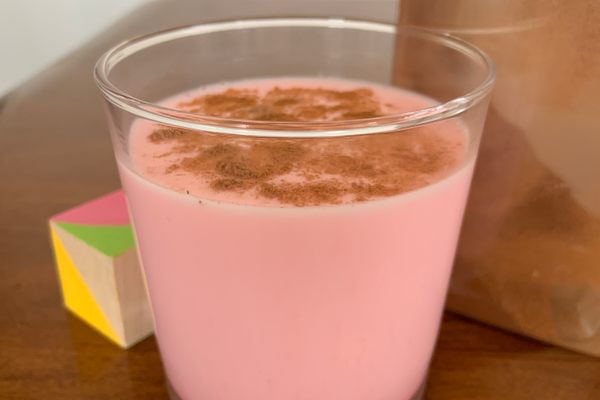Fruits & Vegetables
Strawberry Tree Fruit
The lychee-looking fruit appears in everything from jam and liqueur to the Aeneid and Madrid's flag.
If you stroll through a field in Tuscany or down a residential street in Portland, Oregon, you may find a tree sprouting what appear to be little red poof balls. This is Arbutus unedo, a tree that is native to the Mediterranean, but is also a popular ornamental plant throughout the United States’ Northwest. These lychee-looking balls typically fall to rot in the yards of homeowners who are often unaware that they are not only delicious in jams and liqueurs, but have served as powerful symbols in funeral rites and politics.
The fruit earned the name “strawberry tree fruit” (not to be confused with Myrica rubra or Muntingia calabura, which also share the nickname) due to its strawberry-like appearance. But on closer inspection these fruits are rounder and contain tiny bristle-like protrusions.
On its own, the flavor of this fruit’s orange flesh is like a bland peach. It has a sweetness, a slight sourness, and a soft yet sandy texture due to tiny seeds. But if the pulp is sieved, cooked, and prepared with sugar and lemon juice, it can be made into a delicious jam. In Portugal, where the plant is known as medronho, farmers in the Algarve region make a strawberry fruit–based brandy called aguardente de medronhos. The fruit is also a key ingredient in the Portuguese honey liqueur Dom Cristina (also known as Brandymel). Sardinians make a bitter honey (miele di corbezzolo) from the strawberry tree, as well as styles of grappa from the honey and the fruit.
But Arbutus unedo’s importance extends beyond the kitchen or the distillery. Ancient Romans wove the branches together to make funeral biers, as mourners did for Pallas in Virgil’s Aeneid. Later, in 13th-century Madrid, the tree became symbolic of property disputes between the city council and the clergy. According to local lore, after the king granted the council control over the forests, they revised Madrid’s coat of arms to reflect their new property. The design, which previously depicted a lone bear, now depicted a bear foraging from a strawberry tree. The symbol persists today, most famously in the large bronze statue El Oso y el Madroño (“The bear and the strawberry tree”) that is located in Madrid’s city center.
Written By
 Jared Rydelek
Jared Rydelek
Sources
- books.google.com/books?id=PNAkDQAAQBAJ&pg=PA181&lpg=PA181&dq=the+aeneid+pallas+strawberry+tree+fruit&source=bl&ots=08iG7BTo4w&sig=2XGXa0REK6Ih7DO1S7ZBPjKYc5A&hl=en&sa=X&ved=0ahUKEwiKoqyH-5HYAhXESiYKHcHMDj0Q6AEIPDAG#v=onepage&q=the%20aeneid%20pallas%20strawberry%20tree%20fruit&f=false
- books.google.com/books?id=L30DAAAAYAAJ&pg=RA1-PA233-IA1&dq=%22arbutus+unedo%22+pallas&hl=en&sa=X&ved=0ahUKEwi4-brT_JHYAhXLwiYKHXIxBDcQ6AEIMjAC#v=onepage&q=%22arbutus%20unedo%22%20pallas&f=false
- homedistiller.org/flavor/liqueurs/fruit_recipes
- www.britannica.com/plant/Arbutus#ref244397
- casadomedronho.com/en/casa-do-medronho/
- portugalresident.com/researchers-find-that-%E2%80%98aguardente%E2%80%99-fruit-medronho-is-good-for-you
- www.argentariogolfresortspa.it/recipes-from-tuscany-strawberry-tree-and-wild-rose-jams/
- portugalresident.com/dom-cristina-%E2%80%93-the-regional-liqueur-that-lost-its-name
- enotecaclub.com/product/4940-distillato_di_miele_di_corbezzolo_rau.htm#.WjfqHLQ-fBI
- www.mieliditalia.it/mieli-e-prodotti-delle-api/mieli-italiani/203-miele-di-corbezzolo
- www.madridtourist.info/puerta_del_sol.html
- www8.madrid.org/gema/escudos/e079.htm



















